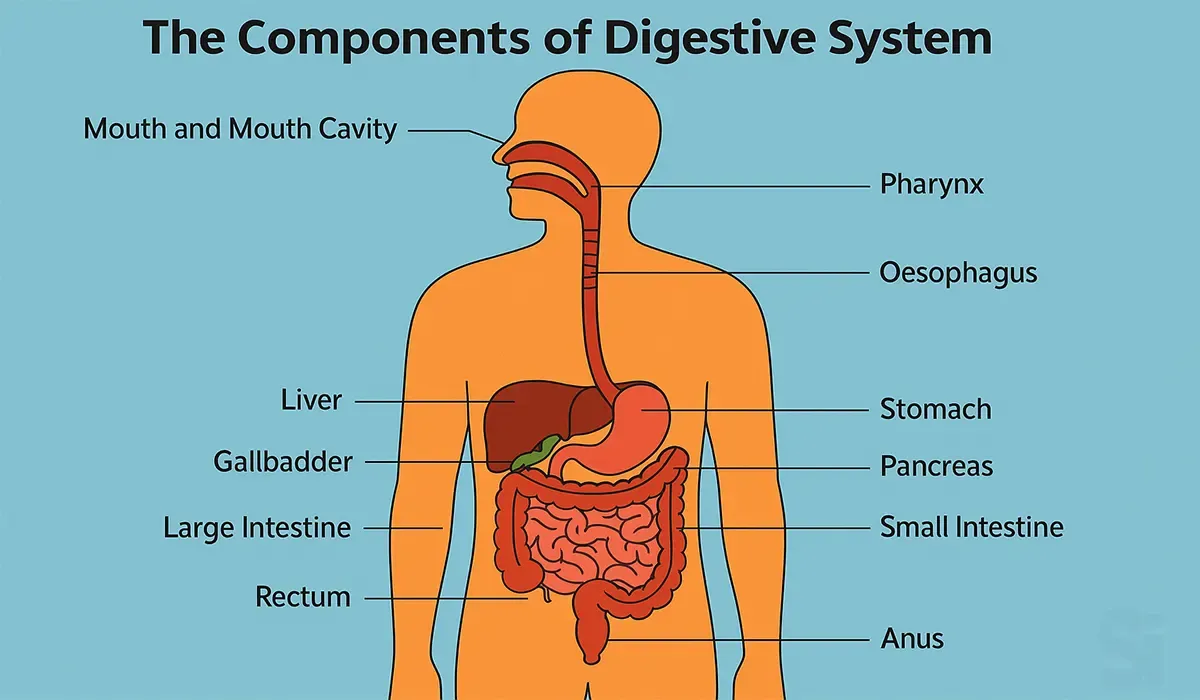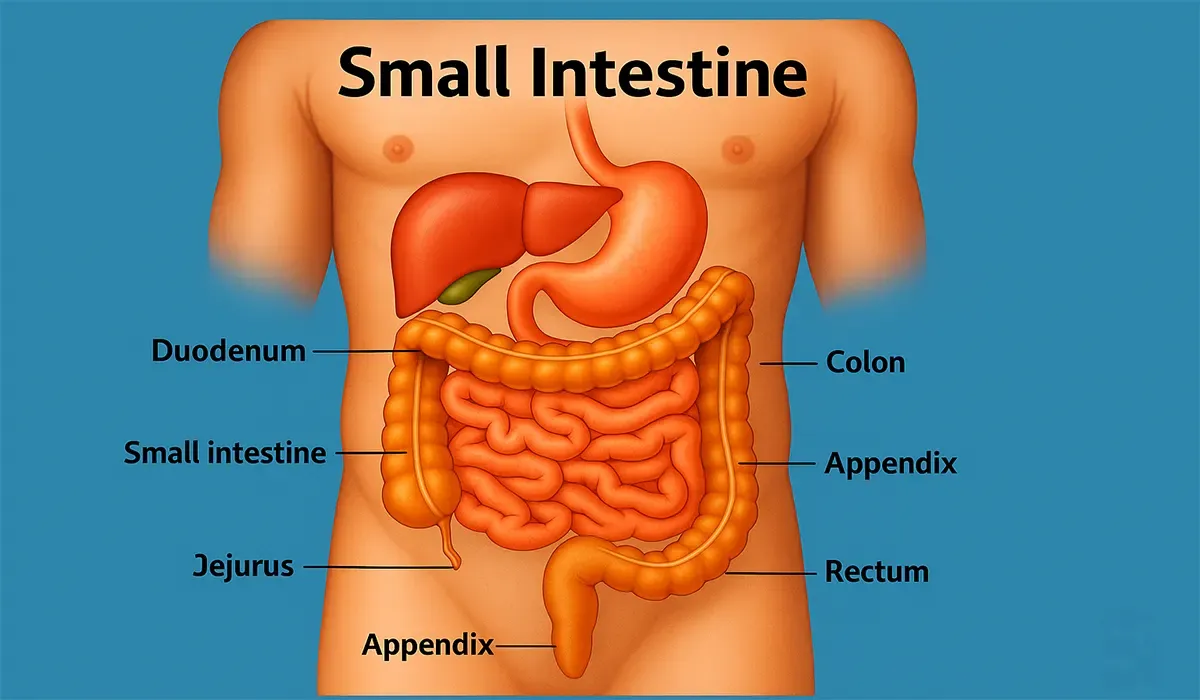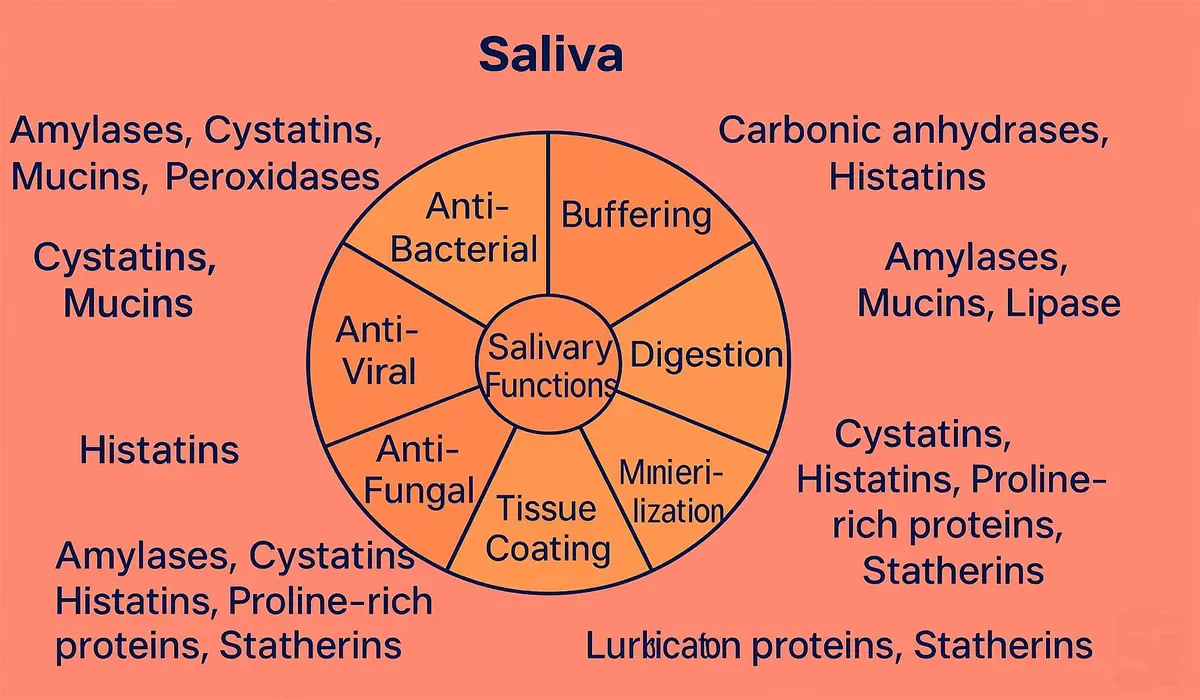Learn human digestive system basics | MPO training 7
Want to become a successful Medical Promotion Officer (MPO)? This article
helps you learn human digestive system basics in a simple way. It covers each
part of the system step by step so you can understand it easily.
Diagram: Human digestive system
Designed for new MPOs or anyone preparing for a pharma job. Easy to read,
organic, and written for real people. If you are joining the medical field,
this guide is for you. Let this be your first step to a great MPO career.
Table of Contents: Learn human digestive system basics
Table of Contents of this Article-
- Learn human digestive system basics
- The Components of Digestive System
- Alimentary Tract and Accessory Organ
- Esophagus
- Stomach
- Intestine
- Accessory Organs of Digestive System
- Digestive Juices
- Saliva
- Composition of Gastric Juice
- Pepsin
- Mucus
- Function of Hydrochloric Acid
- Hydrochloric Acid Production
- What is Prostaglandins?
- Types of Factors in GIT
- Gastrointestinal Diseases
- FAQs
- Conclusion
Learn human digestive system basics
The human digestive system breaks down food so your body can absorb
nutrients. It includes the mouth, esophagus, stomach, small and large
intestines. As a Medical Promotion Officer (MPO), you must understand these
basic functions clearly.
This article helps you learn human digestive system basics using simple
language. You don’t need any advanced knowledge to get started. Just follow
each section and build your concept with ease.
What you will learn at the end of this article-
- What Is Digestion and Digestive System
- Parts of The Digestive System
- Digestion Process
- Functions of The Digestive System
- Disorders of The Digestive System
The Components of Digestive System
| Gastro Intestinal Tract | Accessories Organs |
|---|---|
| 1. Oral Cavity | 1. Liver |
| 2. Salivary glands | 2. Pancreases |
| 3. Pharynx | 3. Gall Bladder |
| 4. Esophagus | 4. Salivary glads |
| 5. Stomach | |
| 6. Small Intestine | |
| 7. Large Intestine | |
| 8. Rectum | |
| 9. Anus |
Diagram: The Components of Digestive System
Alimentary Tract and Accessory Organ
Alimentary Tract/GIT: Different Parts
*Mouth / Oral Cavity
- Lip
- Teeth
- Tongue
*Pharynx
*Esophagus
*Stomach
- Cardia
- Fundus
- Body
- Pylorus
*Small Intestine
- Duodenum
- Jejunum
- Ileum
*Large intestine
- Caecum
- Ascending colon
- Transverse colon
- Descending colon
- Sigmoid colon
*Rectum
*Anus
Accessory Organ: Different Parts
*Salivary Gland
- Parotid (below the ear)
- Submandibular (below the jaw)
- Sublingual (below the tongue)
*Liver
*Pancreas
*Gallbladder
Diagram: Alimentary Tract and Accessory Organ
Esophagus
What is Esophagus?
It takes food from the pharynx to the stomach. Esophagus ends in the
stomach through the esophageal sphincter.
Esophageal Sphincter: Esophageal Sphincters act as "gatekeepers"
in the gastrointestinal tract, controlling the passage of substances
along the canal.
- Function: It carries food bolus to the stomach.
Stomach
What is Stomach?
The stomach is a hollow muscular bag situated between the esophagus
and small intestine.
Diagram: Stomach
Functions:
- Storage of Food
- esophagus
- Mixing of Food
- Controlling of food movements
- Digestion
Parts of Stomach
It is histologically divided into 4 portions:
- Cardia (Upper part): Connects the esophagus and the stomach.
- Fundus: Projects upward in a dome shaped manner.
- Corpus: Major part of the stomach.
- Pylorus (Lower part): Contains the pyloric sphincter.
Diagram: Parts of Stomach
Stomach: Musculature
- a. Mucosa
- b. Submucosa
- c. Muscular Layer
- d. Serosa
Diagram: Stomach Musculature
Stomach: Glands
Gland of Gastric Walls:
- a. Gastric gland
- b. Pyloric gland
Diagram: Stomach Glands
Gastric Gland
- Mucous Neck Cells: Localized to the neck region, that secrete a mucous.
- Peptic / Chief Cells: Located deep within the glands secretes pepsinogen.
- Parietal Oxyntic cells: Mostly in the middle and upper portions of the gland, with an intracellular canalicular system, secreting HCI and Intrinsic Factor.
Diagram: Gastric Gland
Pyloric Gland
- Mucous Neck Cells (Mostly): Localized to the neck region, that secrete mucus.
- Peptic / Chief Cells (Few): Located deep within the glands secretes pepsinogen.
- Gastrin Cells: Secretes gastrin, a local hormone responsible for Hydrochloric acid secretion.
Intestine
Small Intestine:
It is subdivided into three parts:
- Duodenum
- Jejunum
- Neum
Small Intestine has finger-like projections known as villi,
where absorption takes place.
Diagram: Small Intestine
Function:
- Major site of digestion and absorption of nutrients.
- Site of secretion of salts.
Large Intestine
The large intestine has following 5 sections:
- Caecum
- Ascending colon
- Transverse colon
- Descending colon
- Sigmoid colon
Diagram: small and large intestine
Accessory Organs of Digestive System
- Salivary Gland
- Pancreas
- Liver
- Gallbladder
Diagram: Accessory Organs of Digestive System
Digestive Juices
- Various digestive juices
- Saliva
- Gastric juices
- Pancreatic juices
- Intestinal juices
- Bile
Diagram: Digestive Juice
Type of Secretion
| Type of Secretion | Daily Volume (mi) | pH |
|---|---|---|
| Saliva | 1000 | 6.0-7.0 |
| Gastric secretion | 1500 | 1.0-3.5 |
| Pancreatic secretion | 1000 | 8.0-8.3 |
| Bile | 1000 | 7.8 |
| Small intesting secretion | 1800 | 7.5-8.0 |
| Brunner's gland secretion | 200 | 8.0-8.9 |
| Large intestinal secretion | 200 | 7.5-8.0 |
| Total | 6700 |
Saliva
Functions of Saliva:
- Moisten and lubricate the bolus for swallowing.
- Dissolve substances to allow taste.
- Provide enzymes for the start of the digestive process.
- These are amylases (carbohydrate digestion) and lipases for fat digestion.
- Saliva also moistens the mouth for speech.
Composition of Gastric Juice
Pepsin : Active form precursor pepsinogen.
Hydrochloric acid (HCl) : Activates pepsinogen.
Mucus : Provides mechanical protection for
gastric mucosa.
Intrinsic factor : Essential to the absorption of
Vitamin B12.
Gastrin : Hormone that stimulates HCL secretion.
Pepsin
*Pepsinogen (Inactive) HCl Pepsin (Active)
- Function: Pepsin digests protein partially to peptone.
*Protein Pepsin Peptone.
Mucus
Mucus Contains:
- Water
- Glycoprotein
- Bicarbonate
* Function: Protective Action
a. Chemical Protection : Bicarbonate + Acid =
Neutralization.
b. Mechanical Protection: Gastric Mucosal barrier.
- It is a thin layer of mucus over gastric mucosa. It protects the gastric mucosa from the harmful effect of hydrochloric acid and pepsin.
c. Lubrication.
Function of Hydrochloric Acid
A. Digestion and Absorption:
- Activation of pepsin.
- Hydrolysis of all food stars.
- It keeps iron in ferrous state for absorption.
B. Bactericidal Action:
- Hydrochloric acid destroys the bacteria present in the food.
C. Optimal Environment.
Hydrochloric Acid Secretion: Mechanism
Diagram: Hydrochloric Acid Secretion Mechanism
Diagram: Hydrochloric Acid Secretion Mechanism
Hydrochloric Acid Production in Parietal Cell: Mechanism
Diagram: Hydrochloric Acid Production in Parietal Cell Mechanism
Hydrochloric Acid Production
Acid production in parietal cell is stimulated
by:
- Acetylcholine
- Histamine
- Gastrin
How They Work:
- A. Acetylcholine + M2 Receptor = ↑ Acid Production + Histamine Secretion
- B. Histamine + H2 Receptor = ↑ Gastric Acid Secretion
- C. Gastrin + Gastrin Receptor = ↑ HCL Secretion
What is Prostaglandins?
PGE stimulates secretion of mucus and bicarbonate
Ensures an supply of oxygen, nutrients and
bicarbonate to the gastric cell.
Types of Factors in GIT
Aggressive Factors:
1. Gastric Juice Barrier:
- Acid
- Pepsin
- Bile salts
- Pancreatic enzymes
2. Endogenous Bacteria:
- Helicobacter pylori
3. Extrinsic Factor:
- Aspirin
- NSAIDS
- Alcohol
- Caffeine
Defensive Factors:
- 1. Mechanical: Mucus
- 2. Chemical Barriers: Bicarbonate
- 3. Biological Barriers: Epithelial cell
Gastrointestinal Diseases
- Peptic Ulcer on Gastric Ulcer
- Gastro esophageal Reflux Diseases
- Nausea
- pain
- heartburn
- abdominal distension
- nausea
- Vomiting
- bloating
- constipation
- diarrhea
FAQs
1) What is the full form of GERD?
Answer: The full form of GERD is Gastro
esophageal Reflux Diseases.
2) What is the full form of HCl?
Answer: The full form of HCL is
Hydrochloric acid.
3) What is the full form of GIT?
Answer: The full form of GIT is
Gastrointestinal Tract.
4) What are the main organs of the human
digestive system?
Answer: The main organs of the human
digestive system include: Mouth, Esophagus,
Stomach, Small intestine, Large intestine, Liver,
Pancreas, Gallbladder. Each plays a vital role in
breaking down food and absorbing nutrients
efficiently.
5) Why is the digestive system important for
overall health?
Answer: The digestive system is essential
because it turns the food we eat into nutrients
that fuel our body. A healthy digestive system
helps prevent many common health issues such as
gas, bloating, constipation, and even nutrient
deficiencies. Good digestion also supports
immunity and energy levels.
6) How can I keep my digestive system healthy
naturally?
Answer: To keep your digestive system
healthy, eat a balanced diet rich in fiber, drink
plenty of water, exercise regularly, and avoid
overeating. Probiotics, found in yogurt and
fermented foods, also help. Avoid junk food,
smoking, and stress, as they can slow down
digestion.
7) What are the most common digestive system
disorders that MPOs should know about?
Answer: Medical Promotion Officers should
be aware of conditions like acid reflux, peptic
ulcers, irritable bowel syndrome (IBS),
constipation, diarrhea, and gastrointestinal
infections. Knowing how different medications
affect digestion helps in promoting the right drug
effectively.
8) How do digestive enzymes and stomach acids
function in the human digestive system?
Answer: Digestive enzymes break down
carbohydrates, proteins, and fats into absorbable
units, while stomach acid (mainly HCl) helps kill
harmful microbes and activates enzymes like
pepsin. Their balance is crucial for healthy
digestion.
9) Why is it important for MPO candidates to
understand the human digestive system?
Answer: Understanding the digestive system
enables MPOs to confidently explain the mechanism
of action of gastrointestinal drugs to doctors. It
also helps in building credibility, offering
value-based promotion, and improving professional
communication during fieldwork.
Conclusion
Understanding the human digestive system is very
important if you want to work as a Medical
Promotion Officer (MPO). This article helps you
learn human digestive system basics in an easy and
natural way. By learning this, you can speak
confidently with doctors and explain medicines
better. It is your key to building a strong
foundation in medical science. Use this guide as
part of your MPO preparation journey. Stay focused
and keep learning step by step.



















